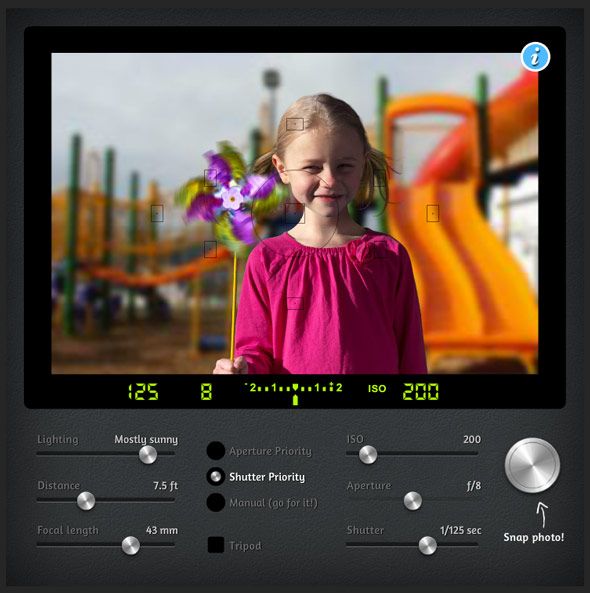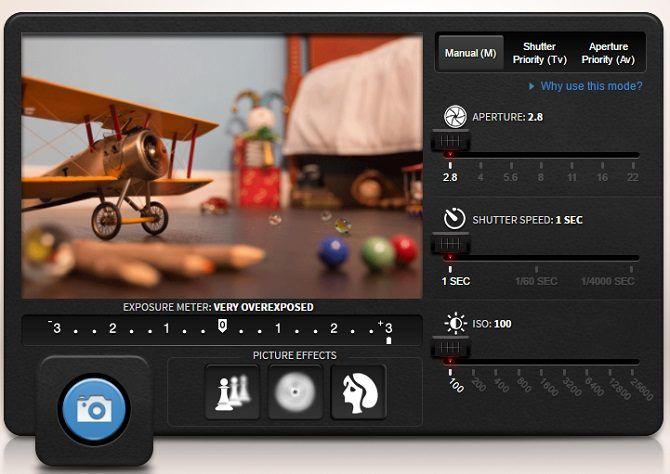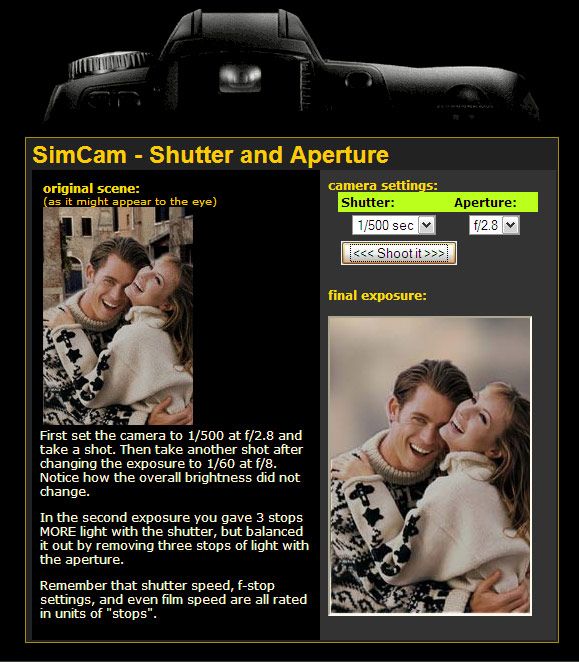It's like a chicken and egg quandary. What do I do? Should I buy an expensive Digital SLR (single-lens reflex) camera first and hit the ground running, or do I learn the basics of photography before I plonk down the serious cash.
Learning the basics of photography makes sense because it helps not only in photography but also in understanding the type of camera one eventually buys.
Thanks to a few camera simulators available on the web (and also on smartphones), you don't have to stay in theory. You can, in fact, try out the basics virtually when it comes to aperture, shutter speed, ISO, focal length et al.
The SLR Camera Simulator (CameraSim)
The SLR Camera Simulator is probably the best online camera simulator of them all. It is an essential bookmark if you are a photography rookie. You can in The SLR camera explained section which is a cool interactive display of how a DSLR works. It is a step-by-step walkthrough of what aperture, shutter speeds, and ISO settings are all about. It takes just about two minutes to learn.
The DSLR Camera Simulator is a virtual camera where you can twiddle around with the different settings and combos. Click the blue "i" (the help mode) to learn about the camera controls. In photography, everything starts with the light. So, keeping that at different points, you can tweak the other controls to click the "perfect" photo of the little girl. You can also check the tripod option to see how it enhances photos (and whether you should invest in one).
CameraSim is also available for purchase on iTunes. We have covered this app in greater detail here - Learn & Practice Camera Exposure Settings With CameraSim.
Canon Play
Canon Play is an official tool from camera manufacturer, Canon.
It gives you a sample photo and you can play around with the aperture, shutter speed, and ISO to see what effect it would have on the image. You can have three tries at taking the photo, then compare your results at the end.
Because all the changes act upon the same photo, it's a great learning tool. You can quickly see how the relationship between the three settings works, putting you in good stead for when you're out in the field and shooting "live".
If you feel like you've mastered the Practice mode, you can move on to the Challenge mode. The app will tell you what type of photo to take (for example, "Good Exposure"), and you need to respond to the request as quickly as possible.
SimCam
The SimCam is not as fancy as the above two apps. It relies more on pre-sets under a dropdown to show you the correlation between different settings. For instance, as the above screen shows, you can learn the basics by changing the shutter speed and the F-number from the dropdown. The tool is effective enough to show you that photography is a lot about compensation…if one factor is naturally high, you have to compensate elsewhere to get the perfect shot.
Also, try out the Camera Shake tool to learn how to spot and avoid camera-shake, something that's quite common if you don't own a tripod.
Your Tips
In the end, these three are just simple simulators. The SLR Camera Simulator does the best job out of the three in my opinion. For instance, it does a far better job of displaying the balance needed between the distance from the subject and focal length.
The camera simulators help you get hands on with the settings before you get hands on with an actual camera. You can always come back and benchmark the settings for use in your real-world camera.
Do you know of any other online camera simulator worth the click out there?
Image Credit: structuresxx via Shutterstock.com




